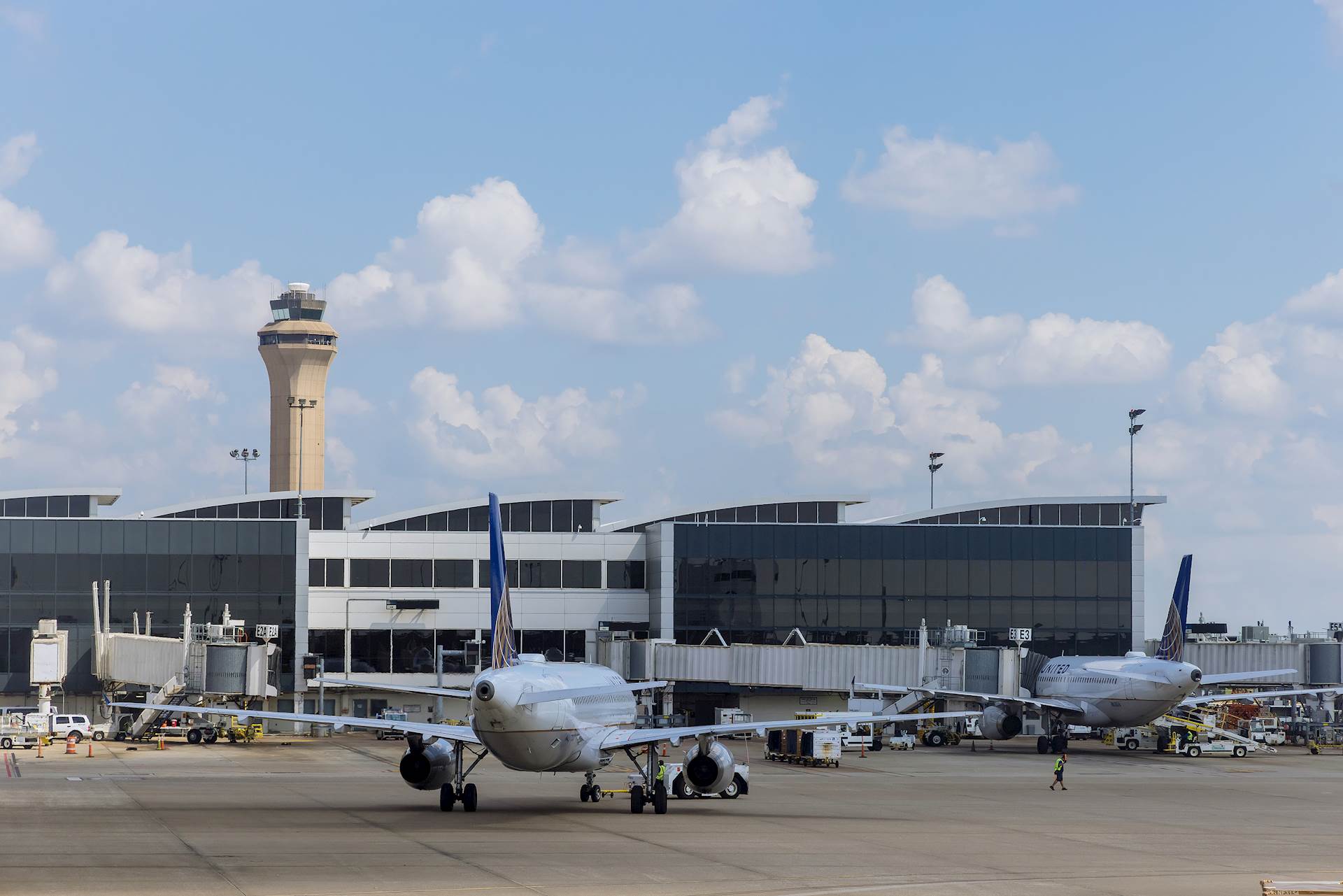 Bigstock
Bigstock
Is your airport looking to add commercial service operations or upgrade your aircraft parking gate? Whether an airport is large-, medium- or small-hub, a commercial service presence likely means passengers use a passenger boarding bridge (PBB) to board or deplane aircraft.
With industry standards evolving and new aircraft routinely arriving on the market, aircraft parking gates need the flexibility to accommodate legacy and new-generation aircraft. Federal Aviation Administration standards identify aircraft by what is known as airplane design groups (ADG). These groups are related to aircraft wingspan or tail height, and they range from ADG I (wingspan less than 49 feet) through ADG VI (wingspan between 214 and 262 feet). Aircraft parking gates are usually designed to accommodate a variety of aircraft but not necessarily various ADGs. Designing or modifying aircraft parking gates to the correct configuration for your airport requires analyzing several factors.
Evaluate your aircraft
A general rule is to group similar size aircraft on the same gate. This will help when you are analyzing the length, wingspan and door sill height of the aircraft. Because of the vertical height range limitations on a PBB, aircraft that have a similar door sill height should use the same gate. The vertical component of a PBB can be raised or lowered; however, it is not standard practice or efficient to adjust the PBB height in between aircraft parking operations.
Pick the right PBB
Once you have identified the aircraft, select the appropriate PBB if you have a new gate. PBBs vary, but you should consider the maximum and minimum operational lengths you need and check that the employee stairway is on the appropriate side of the PBB tunnel. The operational lengths of PBBs can range between two- and three-tunnel models. Finding the optimal operating length is crucial to making sure the PBB can dock to the aircraft and keeping the minimum operating length clear of the protective aircraft containment line when the PBB is retracted.
Consider the PBB’s slope
Once you’ve selected the PBB, you need to analyze its slope. To comply with the Americans with Disabilities Act, a PBB’s maximum allowable slope is 1:12. The slope is determined by the difference in the height between the PBB rotunda (the PBB platform) and the aircraft door sill height (where the PBB docks to the aircraft), divided by the overall length needed to dock the PBB to the aircraft. This calculation will help you determine the proper placement of the aircraft lead-in line.
Measure stop bar distance from fuel hydrants
The location where the aircraft stops along the aircraft lead-in line is known as a stop bar. Best practice is to group as many similar aircraft as possible on the same stop bar to minimize the number of stop bars needed. Keep in mind that you will need a minimum of 25–30 feet for tug circulation between the terminal and the front of the aircraft.
When you place the stop bar, keep in mind any nearby fuel hydrants. Although they can vary, the typical standard distance you will need from the aircraft fuel port to the fuel hydrant is a maximum of 15 feet. A shorter distance is better, because it will reduce the amount of fuel hose needed on the ramp. However, no part of a parked aircraft should be directly over the fuel hydrant in case of backflow. The ideal fuel hydrant location is slightly behind the wing when the aircraft is parked.
You should also consider any ground support equipment and catering vehicles that need to access the aircraft. An aircraft should never park where the fuel hydrant will be in front of its engines. Some airports use fuel trucks to refuel the aircraft, which provides some flexibility in the analysis.
Keep wingtips separated
Once you’ve addressed the details above, check for proper wingtip separation between aircraft at adjacent gates. Although it can vary per airport and airline, jumbo and large-body aircraft protect for 25 feet of wingtip separation, and narrow-body aircraft protect for 20 feet of wingtip separation. Some parking gates have an existing or proposed vehicle service road (VSR) behind the gate, and the aircraft parking position should protect for a minimum of 10–20 feet from the aircraft’s horizontal stabilizer to the VSR.
The old aviation saying, “If you’ve seen one airport, then you’ve seen one airport,” is applicable here and illustrates the fact that every airport is unique and can present different challenges. This article covers only a handful of the significant factors that you should be aware of when completing an aircraft gate analysis.
A quick PBB checklist
- Which aspects of the aircraft do you need to analyze?
- overall length and wingspan of aircraft
- door sill height
- Which PBB should you select?
- maximum versus minimum operational lengths
- vertical height
- maximum slope
- Consider the radius to your fuel hydrants
- What are your separation requirements?
- wingtip clearances
- horizontal stabilizer (tail) clearances
- tug access
- Don’t forget to address ground support equipment circulation
Keep in mind that any gate utilization software is just that: software. Whenever possible, you should field-verify conditions and operations prior to using your aircraft parking gate. To read more about parking gates, check out our previous posts on passenger boarding bridges and multiple aircraft ramp system gates.
Jeff Alexander, C.M., is an associate discipline manager and aviation planner in Hanson’s Orlando, Florida, regional office. Some of Jeff’s aircraft gate parking analysis experience includes Orlando International Airport (airside 1, 2, 3, 4 and Terminal C); O’Hare International Airport; Daniel K. Inouye International Airport (Honolulu International Airport); Jacksonville International Airport; Orlando Sanford International Airport; Northwest Florida Beaches International Airport; and Key West International Airport (initial gate planning for Concourse A, scheduled to open in 2025). He can be reached at jalexander@hanson-inc.com.